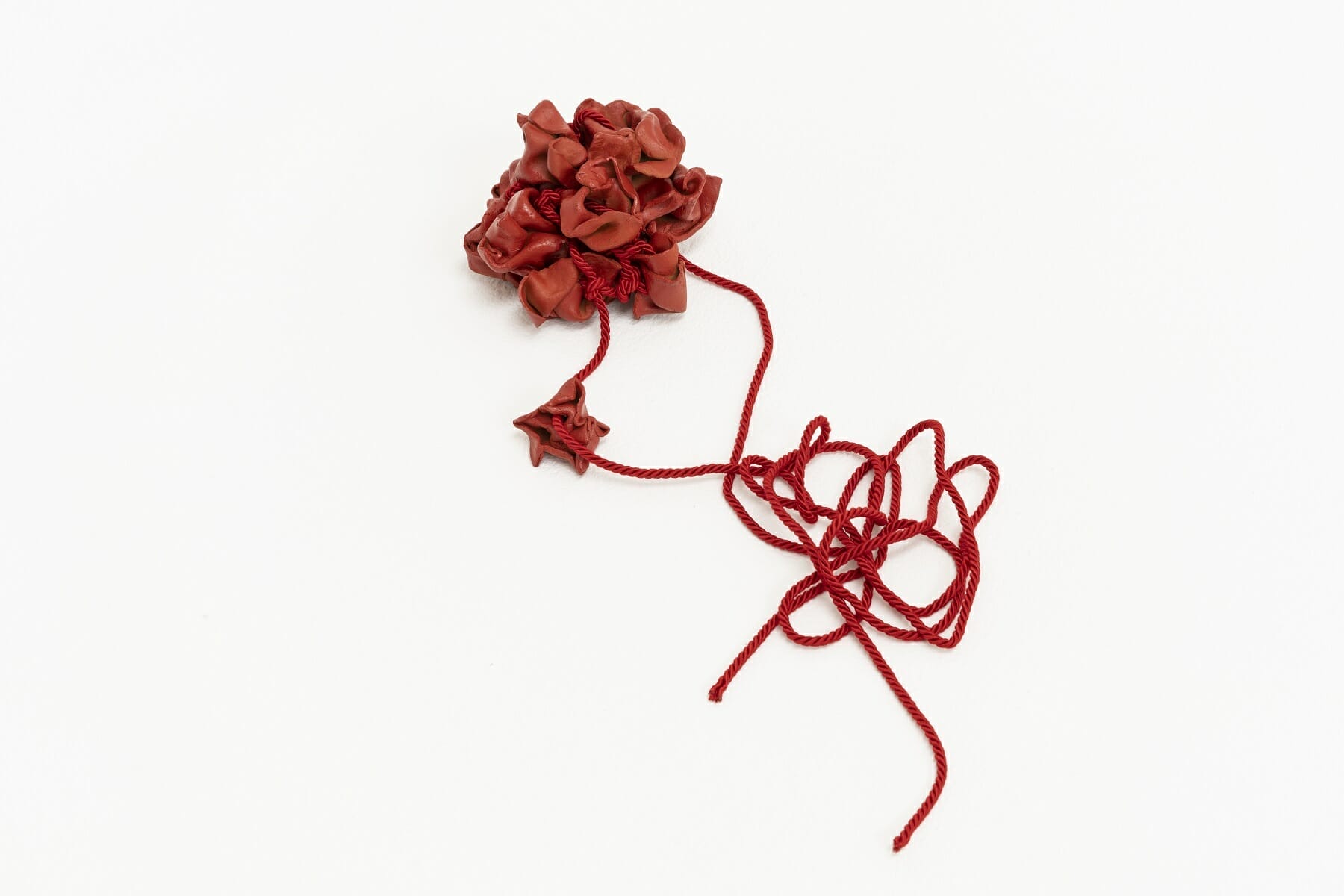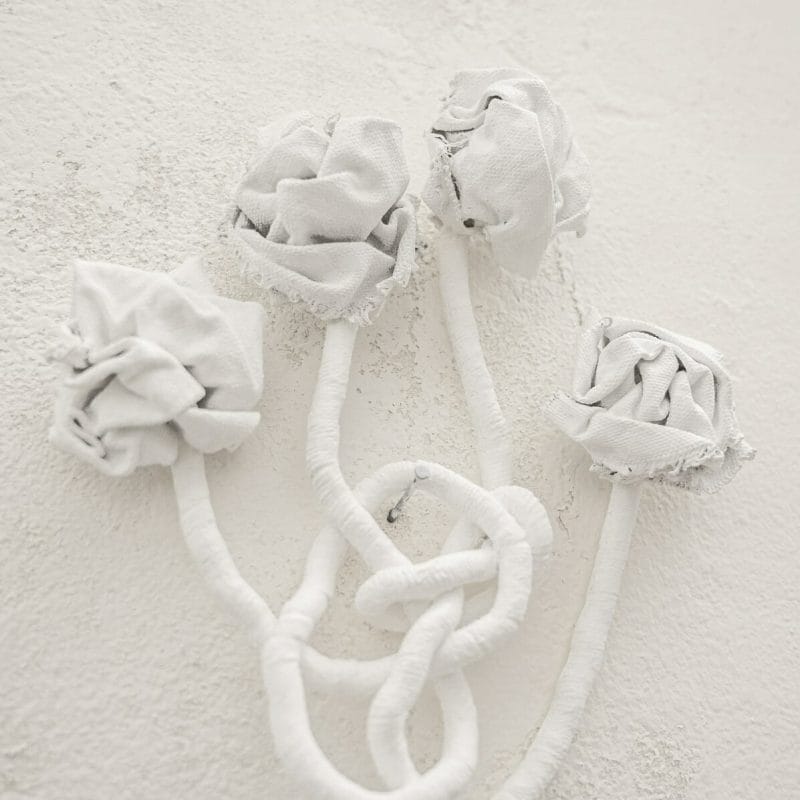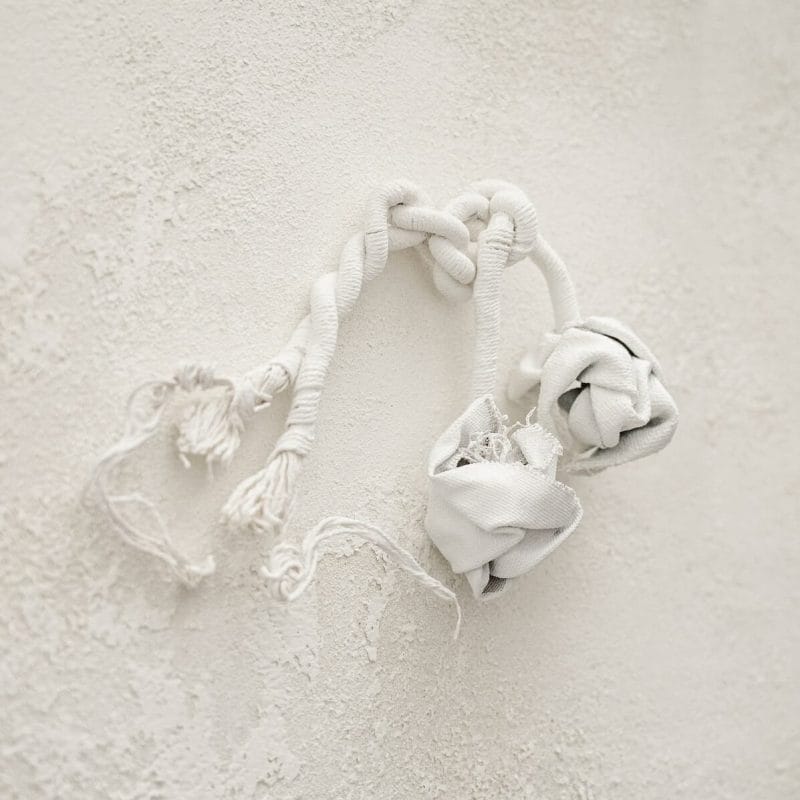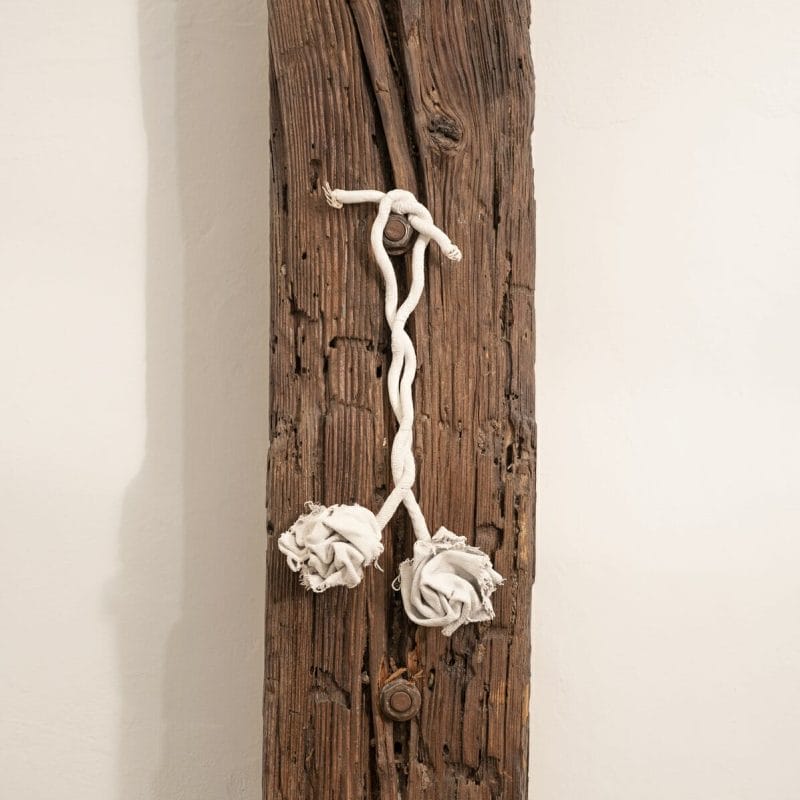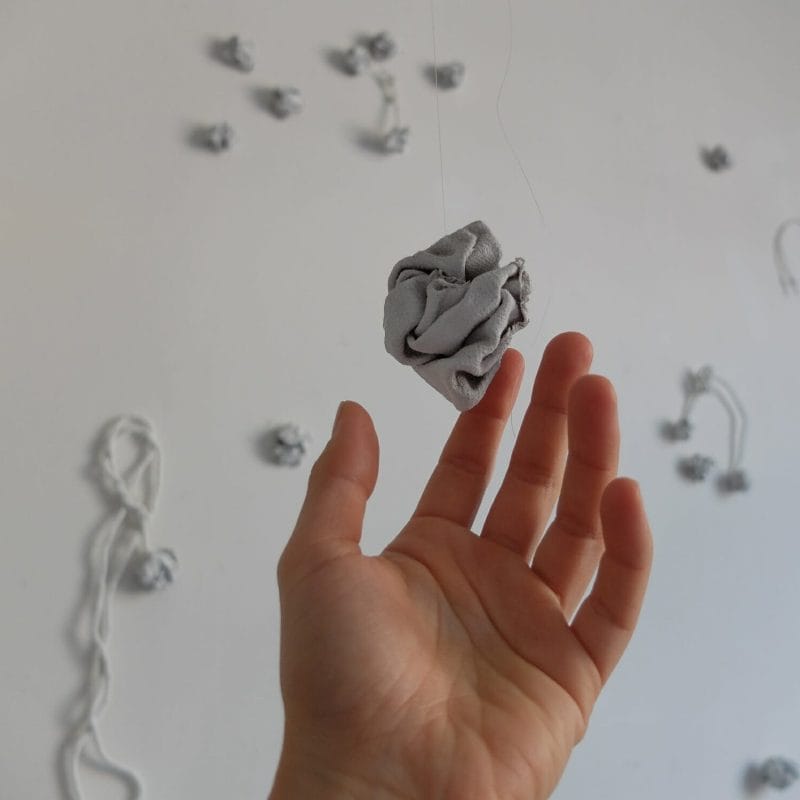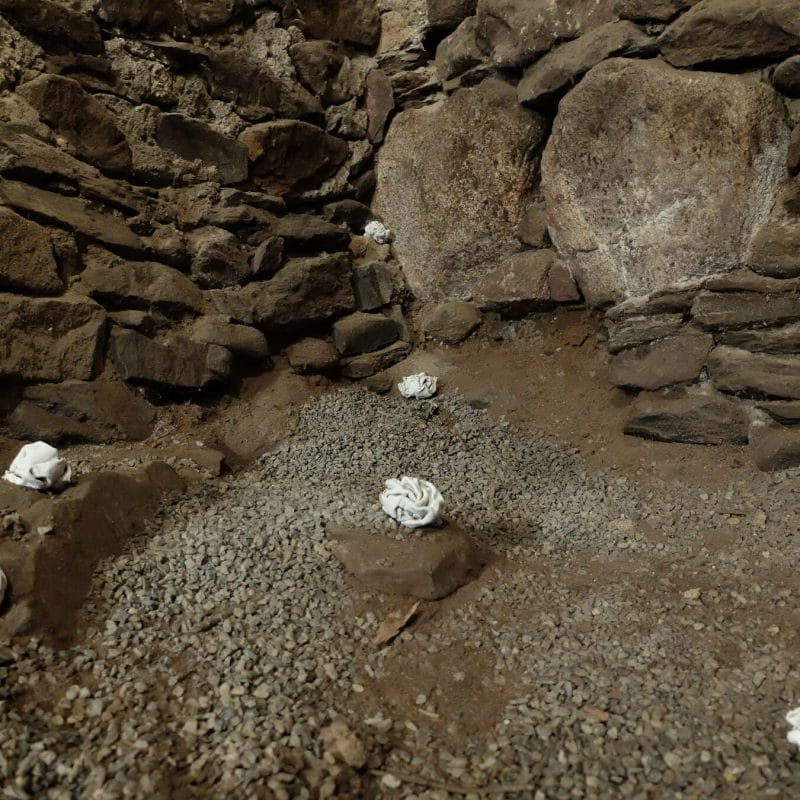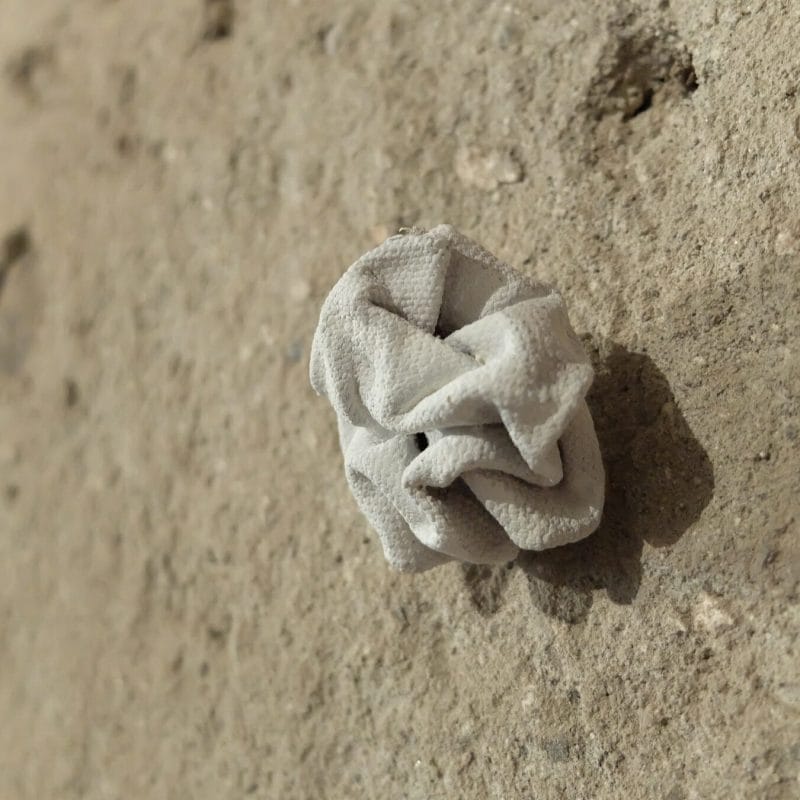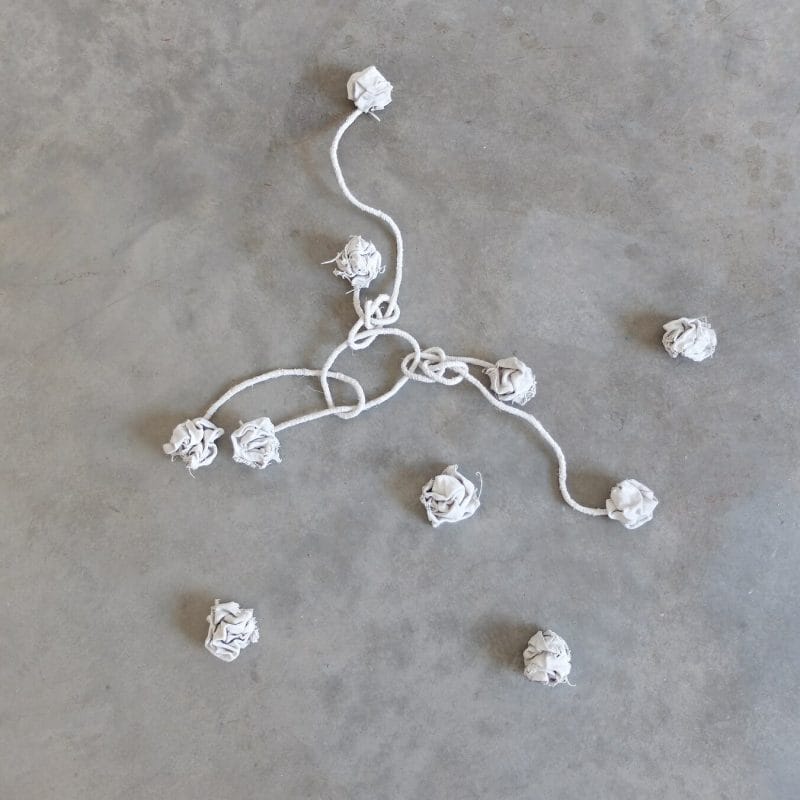SERENA NICOLI
*Featured photo: Nudos 2020 Fine Art Pigment Print Hahnemüle ultra smooth 100% cotton (print 2022) frame 31×46 cm Courtesy the artist
Born in Varese, class of 1985, Serena Nicolì graduated in Contemporary Visual Arts at the Santa Giulia Academy of Fine Arts in Brescia, after studying and graduating in International Relations which for many years led her to travel and work in different countries of the world (Spain, China, Latin America).This dynamic essence of her life has profoundly influenced her artistic research which develops from the reinterpretation of biographical, identity and cultural geographies, both personal and experienced, and collective and imagined. She works with different types of materials, on which she impresses a highly manipulative and gestural action, with a particular predilection for predominantly natural textile fibers, also combining organic materials.
She told us about herself and her work in this interview for ArteMorbida.
The knot is the basic element of many of your recent works. What does it represent for you?
The knot is the emblematic system of my visual poetics, of my progress. It represents materially and symbolically the union, the bond between two parts. However, it does not constitute an indissoluble bond. By its nature it presents at the same time the ambivalence of connection and dissolution. The individual and collective history of all of us is made up of bonds, solid or permeable to the passage of time and human relationships. A system of knots and intertwining determines a particular plot, as if it were the narration of all those unions that make up our collective universe.
The fibers that I prefer to knot for my work are ropes. In our womb we all carry the trace of a cord, a symbol of a bond and channel of transmission of vital nourishment. Working with the rope means acting humanly in the sign of a trace that already exists in us, in what has been outlined starting from our origin and which remains imprinted on our body forever.
Binding therefore means for me to trace existential itineraries, that is, to create textures of matter and life. Knotting is a gesture that allows me to enter a dialogical dimension with the body, matter and time.
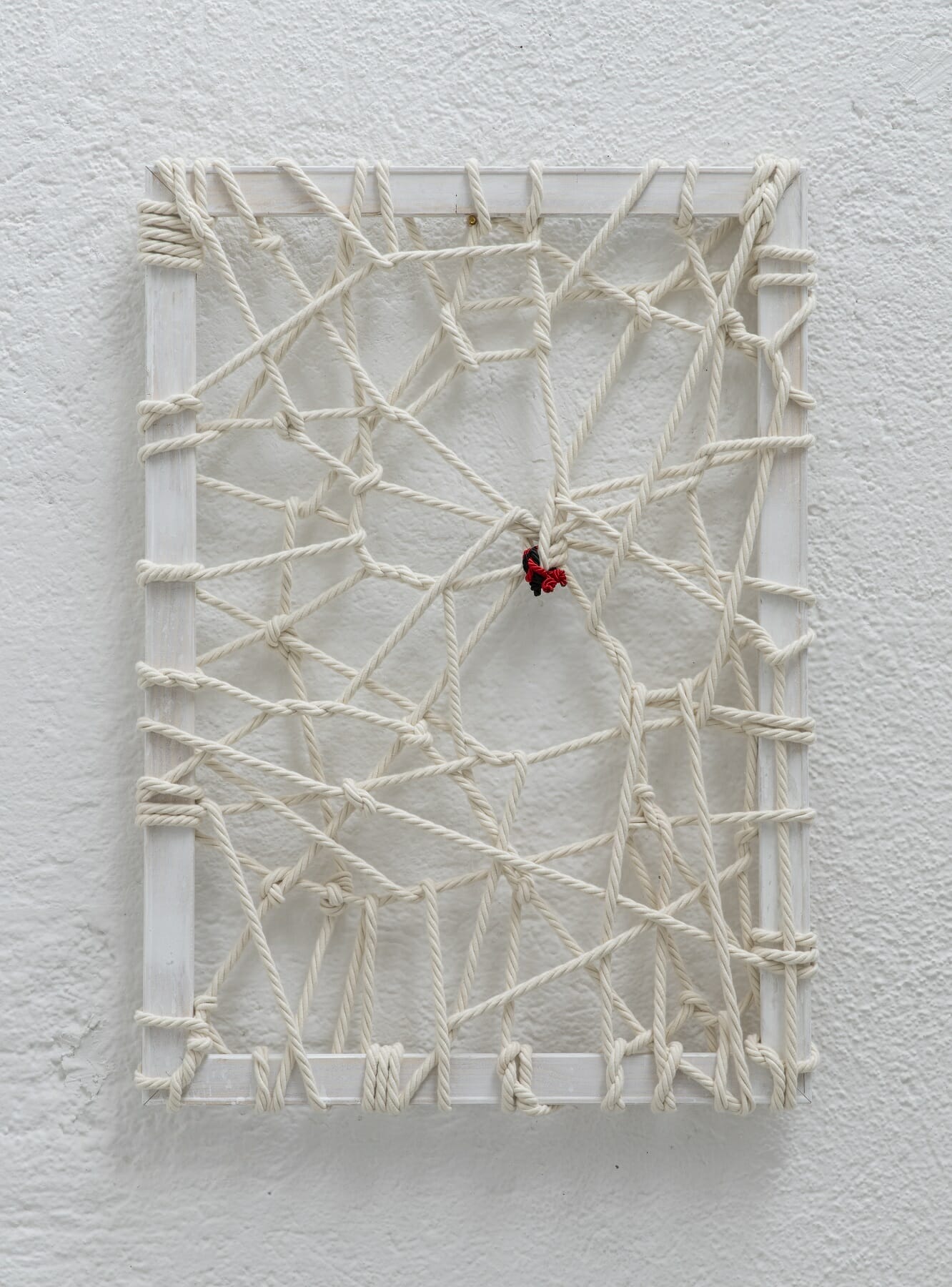
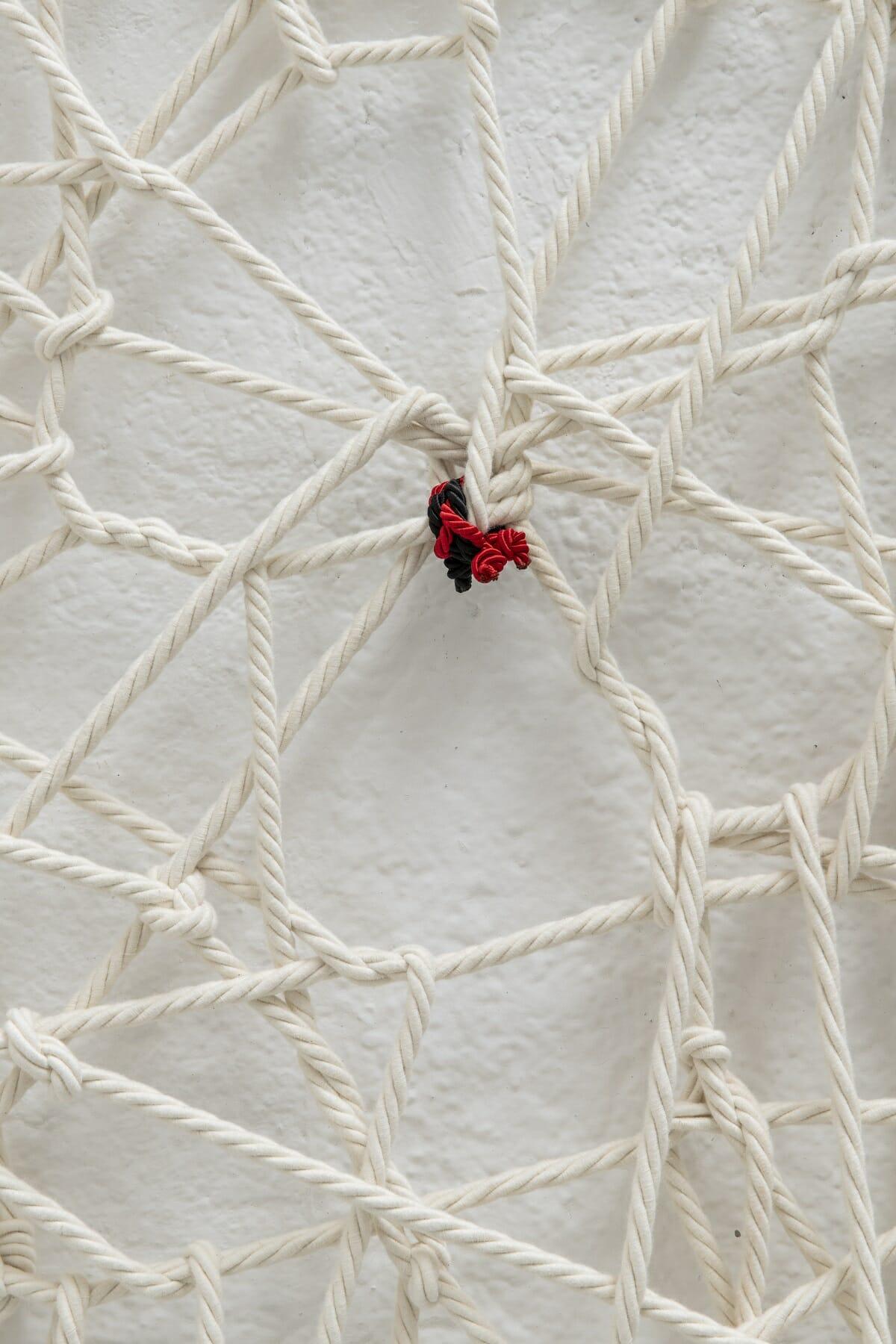
Fibers and fabrics are among your materials of choice. When did you start experimenting with the textile medium and what are the factors that make it the most suitable expressive language for your artistic research?
Fibers and fabrics represent a family story for me. My paternal grandfather traded linen after World War II, so I grew up with the idea and attention to quality fabric from an early age. Then, thanks to my professional experiences in Latin America, especially in Ecuador, where I lived and worked for seven years, I was in close contact with the production chains of some local textile fibers: sheep’s wool and camelids. Later attending the Santa Giulia Academy in Brescia, in the two-year specialization in Contemporary Visual Arts, my interest immediately turned to the textile medium. I have been working with these materials for five years, which thanks to their softness lend themselves to a very high degree of flexibility and manipulation, thus allowing me to impress the gesture on the material in a free, strong and evident way.
Who and what has influenced or inspired your work as an artist over time?
Personally I am very fond of some great artists, who in past or more recent history have broken through conceptually unexplored territories and whose works have great communicative power. Just to name a few: William Morris, Sonia Delaunay, Eva Hesse, Joseph Beuys, Jannis Kounellis, Louise Bourgeois, Maria Lai and nowadays also Mona Hatoum, Chiharu Shiota, Sissi.
In comparison to what, on the other hand, an atavistic, almost primordial feeling binds me to my way of working, not entirely explainable in words. For example, with respect to the knot, some scholars theorize that man may have begun to weave natural, animal or vegetable fibers, even before the discovery of fire. Difficult to say, but I feel this primordiality of the gesture as an urgent and irreplaceable expressive necessity. Perhaps our being artists really has very distant origins in time.
Body, matter, change: how are these three elements expressed in your artistic practice?
The body is my basic physical and conceptual unit. In fact, my work often starts from biological research and if this does not materialize with the use of an organic material, it still has a strong reference in form or formality. For example, in some embroidering jobs, I used my hair instead of the thread; while in others, the knotted ropes allowed me to communicate a certain viscerality. Matter, therefore, rather than lending itself to the concept, is in fact one with it. Change for me is a movement. In my knotting work, not only the result is evident, but also the trace of the process, of the gesture that transforms. For me, this is the inner movement of the artist’s soul that manifests itself concretely.
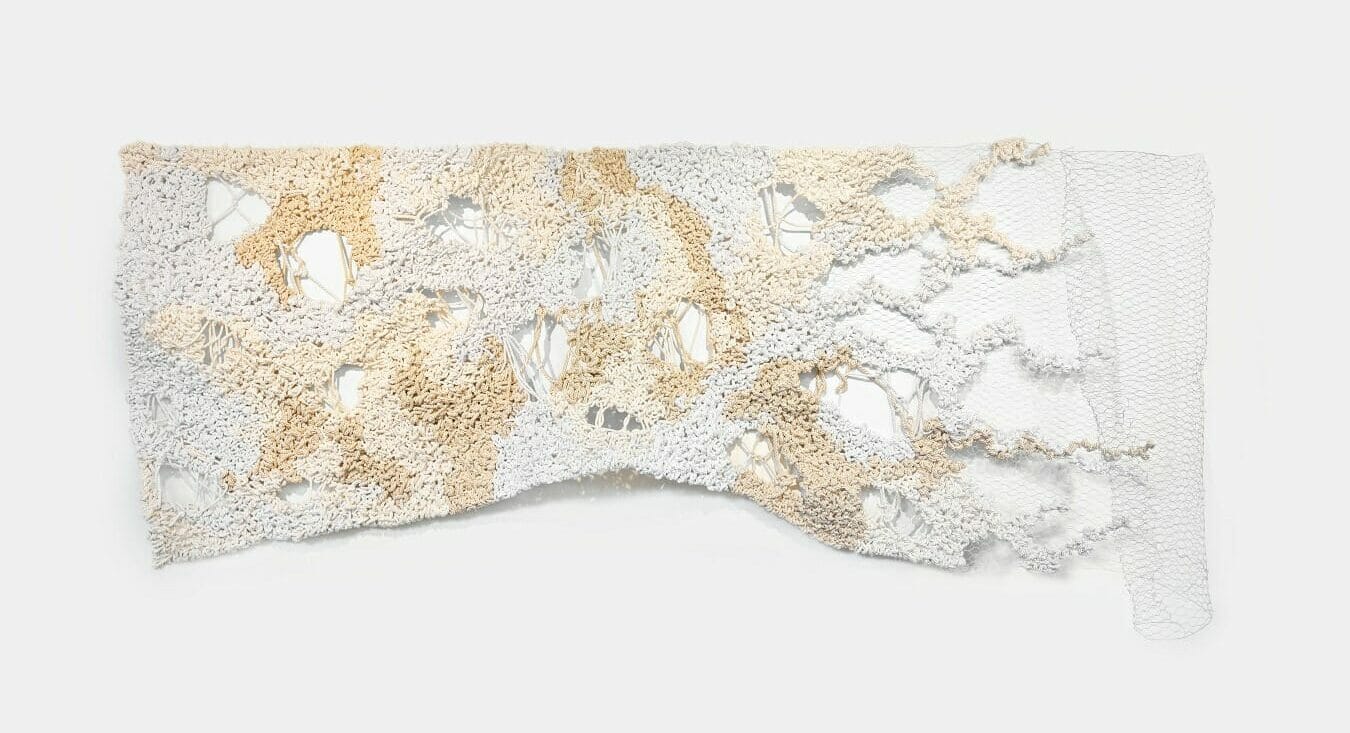
How has your ‘making art’ evolved and how has it changed from the beginning to today?
In the early years I experimented with many expressive means, often mixing materials and using different techniques. Paint and fabric, for example, still have a very fleeting, subtle, permeable boundary for me. In some of my textile sculptures, it is as if I were painting without painting, only with strings, seeking that compositional-chromatic balance, which I would also have sought in painting.
I am currently also working on research that brings the body and textile fibers closer and closer, in a union that still leaves great spaces for expressive freedom, through the performative medium.
What does it mean for you to be an artist?
To be. To live. Feel. Love. Suffer. To communicate. Transform. Play. Be amazed. To produce. Bind. Abandon yourself.

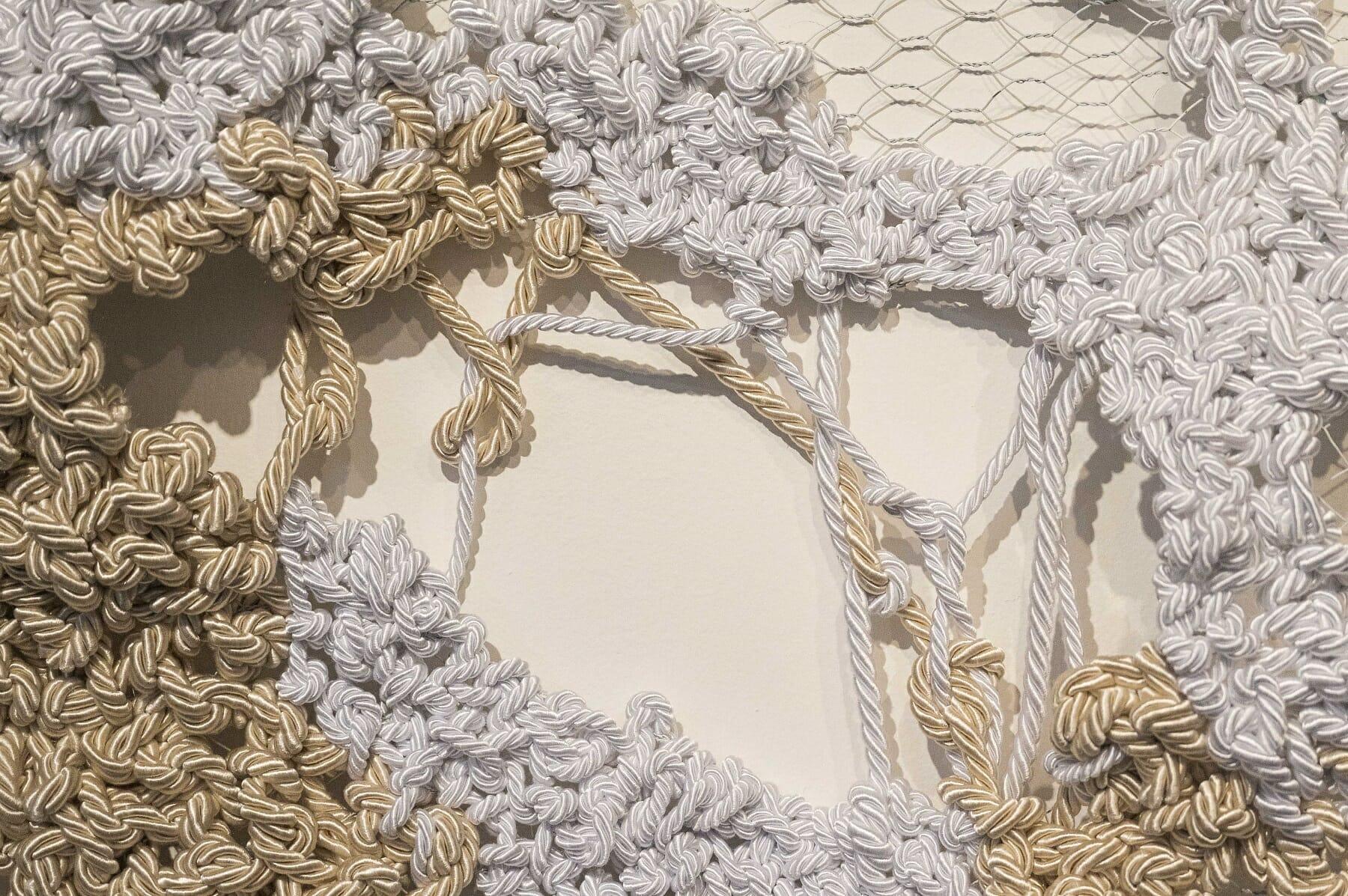
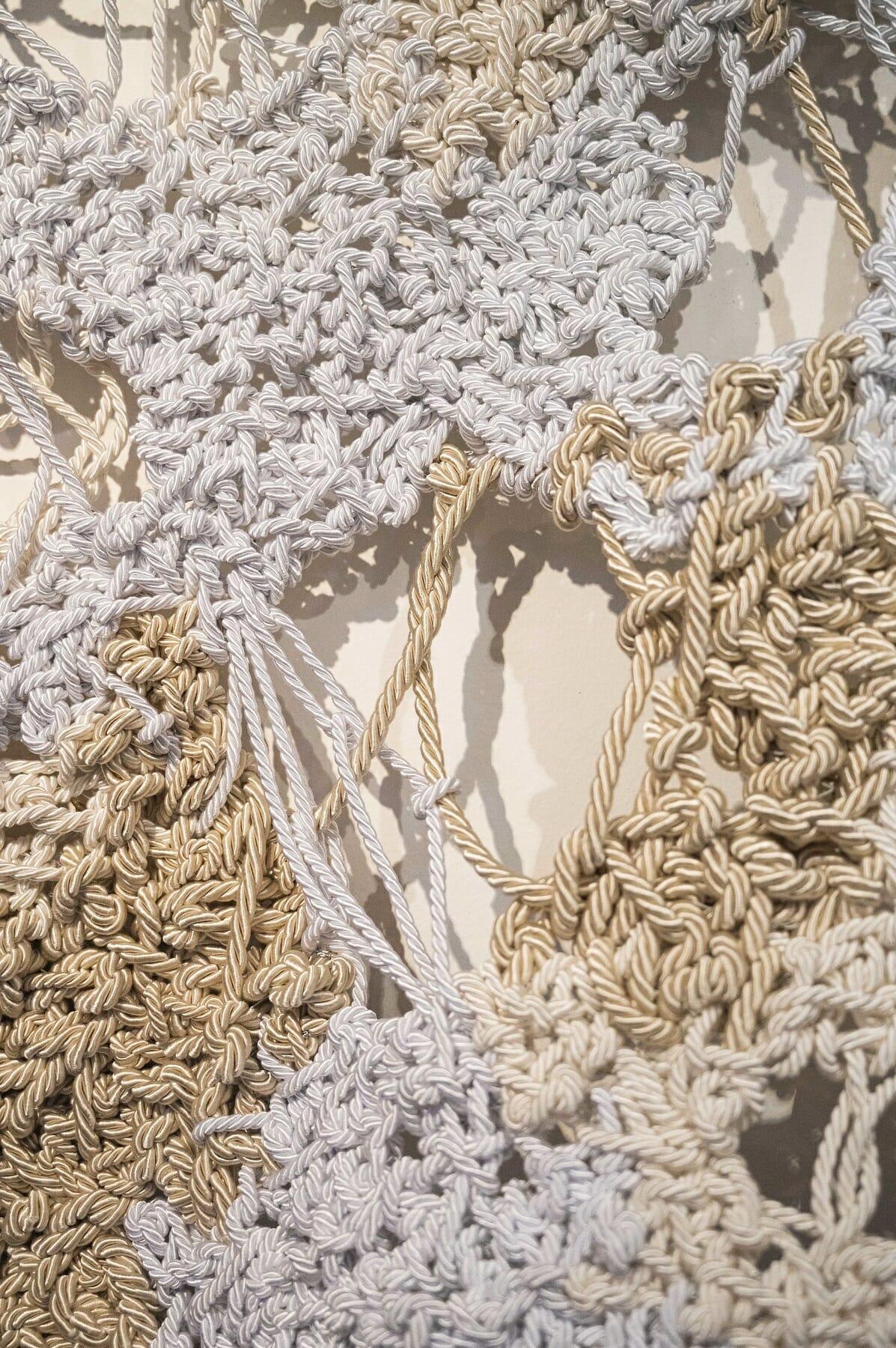
How autobiographical is your art? And what is the relationship between art and life for you?
My production almost always starts from an autobiographical note, from that intimate and personal experience that is part of the story of each of us. It could be said that my work investigates biographical geographies, soul morphologies and life relationships, through those plots that I create with matter and which essentially correspond to a narrative of existence. Basically, for me, art and life coincide eternally.
The most intimate, most ‘yours’ work that you have created?
120 flowers: it is an autobiographical work, made up of one hundred and twenty small white fabric sculptures, arranged on the wall, on the floor or hanging from the ceiling. These flowers represent a person or a group of people united with each other. It is a work that reflects my parental, sentimental and friendly relationships. Sixty corollas are joined together in small groups with knotted stems. Each knot represents a real union of my life, also paying homage to already lost bonds.To carry out the work, I also took some nautical knots and deliberately redone them in an incorrect way, to convey the idea of those relationships that we consider wrong in our lives and which, however, being part of our path, should not be denied. Sixty are instead the free corollas, not yet knotted, which symbolize those relationships to be established in the future, or those suspended, yet to be understood.

New projects on the horizon?
Yes, I will exhibit in some group exhibitions, in which I will have the pleasure of sharing a physical and intellectual space with other artists. I deeply believe in participatory processes as privileged places of maturation, which is why I often establish collaborations with other colleagues. I am also working on a project that brings together various arts: visual and musical, with the help of other artistic sensibilities.
The next few months will see my participation in the collective exhibition Nodi in Puegnago del Garda (11 September-9 October), commissioned by Francesco Visentini, president of the UCAI and curated by Anna Piergentili, where in addition to the works on display, I will create a performance for the finissage .
I will also be present at Paratissima in Turin (2-6 November), within the Savoir Faire exhibition, one of the six projects in the Nice & Fair section, with my work of embroidering with hair Love wasted, in the exhibition curated by Federica Tomatis and Ksenia Yarosh.
In view of next year, a personal one: a great dream and a great job. I can’t wait!


